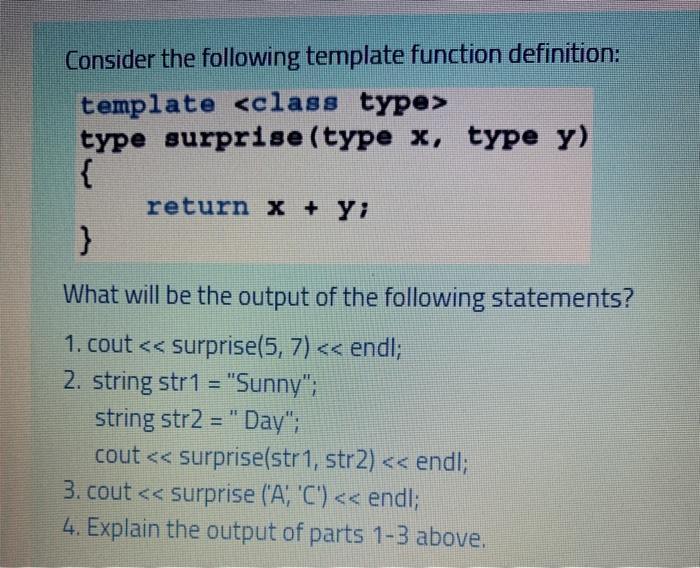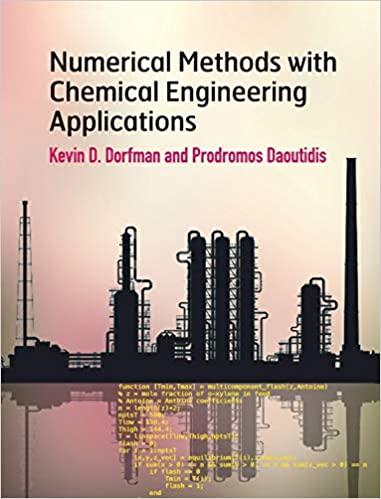Question
Consider the following template function definition: template type surprise (type x, type y) { return x + y; } What will be the output

Consider the following template function definition: template type surprise (type x, type y) { return x + y; } What will be the output of the following statements? 1. cout < < surprise(5, 7) < < endl; 2. string str1= "Sunny"; string str2 = "Day"; cout < < surprise(str1, str2) < < endl; 3. cout < < surprise ('A', 'C') < < endl; 4. Explain the output of parts 1-3 above.
Step by Step Solution
3.39 Rating (152 Votes )
There are 3 Steps involved in it
Step: 1
4 Output is explained above in same part Now lets analyze ...
Get Instant Access to Expert-Tailored Solutions
See step-by-step solutions with expert insights and AI powered tools for academic success
Step: 2

Step: 3

Ace Your Homework with AI
Get the answers you need in no time with our AI-driven, step-by-step assistance
Get StartedRecommended Textbook for
Numerical Methods With Chemical Engineering Applications
Authors: Kevin D. Dorfman, Prodromos Daoutidis
1st Edition
1107135117, 978-1107135116
Students also viewed these Computer Network questions
Question
Answered: 1 week ago
Question
Answered: 1 week ago
Question
Answered: 1 week ago
Question
Answered: 1 week ago
Question
Answered: 1 week ago
Question
Answered: 1 week ago
Question
Answered: 1 week ago
Question
Answered: 1 week ago
Question
Answered: 1 week ago
Question
Answered: 1 week ago
Question
Answered: 1 week ago
Question
Answered: 1 week ago
Question
Answered: 1 week ago
Question
Answered: 1 week ago
Question
Answered: 1 week ago
Question
Answered: 1 week ago
Question
Answered: 1 week ago
Question
Answered: 1 week ago
Question
Answered: 1 week ago
View Answer in SolutionInn App



